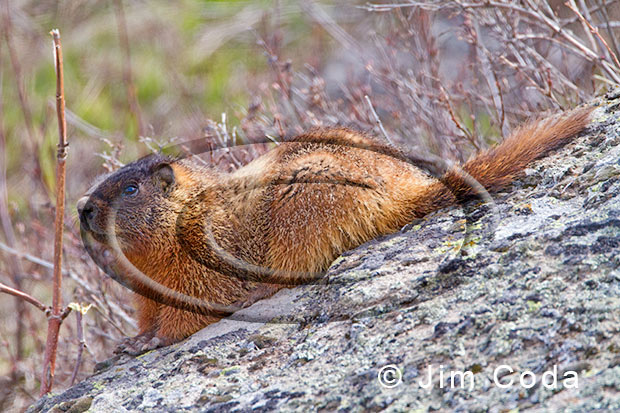Yellow-bellied Marmots, Yellowstone National Park

Yellow-bellied marmots are one of the largest rodents in Yellowstone. They are about 20 t0 28 inches in length and weigh from 3.5 to 11 pounds. They are found at all elevations in the park and hibernate for up to eight months a year at the higher elevations.

A colony consists of one male, several females and young of the year. They breed shortly after emerging from hibernation. Their calls include a loud whistle and a scream when predators are nearby. They are preyed upon by eagles, coyotes and grizzlies. The preceding info is based on the Park Service’s 2005 edition of “Yellowstone Resources & Issues.”

Marmots can be found throughout the park. Look for rocky areas with grass nearby. One good spot is the rock outcropping across from the Sedge Bay picnic area. A couple of years ago I was photographing them there when they started screaming about something behind them. They were a little above me so I couldn’t see what they were agitated about. They took cover in the rocks. I picked up my gear and turned to go back to my truck which was parked on the road’s shoulder about 50 feet away. As I did so a black wolf disappeared into some cover about 40 feet from me. He had apparently walked between me and my truck. A guy pulled up and asked if I saw the white wolf above the rock outcropping. That was the wolf the marmots were screaming about. I said “no,” but I spotted it shortly thereafter. It was going in the opposite direction of the black wolf. For a link to that blog click here.

